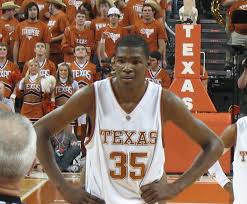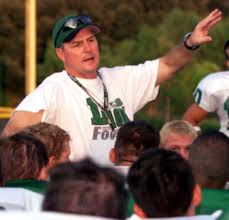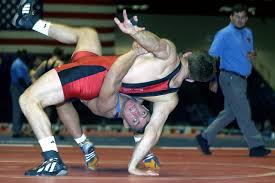
If you are a high school athlete who aspires to compete in college sports, you should know about the college athletic recruiting process. Even if you don’t end up getting a scholarship, many intercollegiate athletes who don’t receive aid are still recruited to participate in sports at the collegiate level. The college recruiting process can be confusing. There are tons of recruiting rules that vary by division and the process for each prospective student-athlete can be extremely different.
In this article, I’ll explain the various steps of the college recruiting process. I’ll provide important advice for prospective student-athletes so that you’re able to reach your collegiate and athletic goals.
The Biggest Steps in the College Recruiting Process
Making Contact With Coaches: Generally, for most student-athletes, the process really begins when you have your first conversation with a college coach about possibly playing for him or her.
Campus Visits: One of the many benefits of being a recruited athlete is having the opportunity to visit multiple college campuses and have all your questions about athletics and academics answered. There are two types of visits: official and unofficial. On official campus visits, your transportation to the college, meals, and entertainment are paid for by the university.
Visits From Coaches: College coaches can visit you at school, practice, a game, or in your home when they're recruiting you. Coaches use these visits to evaluate you and to try to sell their program to you.
Scholarship Offers: For most student-athletes, the scholarship offer comes near the end of the recruiting process. Typically, a coach will call you to extend an offer of athletic aid. Depending on the sport you play and the college that is recruiting you, you can be offered a full or partial athletic scholarship.
Signing the National Letter of Intent: Signing a letter of intent marks the end of the college athletic recruiting process. The letter is an agreement that you will enroll in a certain school in exchange for athletic aid. At this point, coaches have to stop recruiting you, and if any coaches contact you, you have to let them know you've signed a letter of intent.
Now that you have a basic understanding of these steps, I'm going to walk you through the entire college athletic recruiting process. Keep in mind that the process and timeline will be somewhat different for each individual athlete.
For example, some recruited student-athletes don't apply to a college until after they have taken an official campus visit. Others have already applied, been accepted, and have received a scholarship offer by the time they go on their official visit.
Parts of the Process Can Vary Widely
Depending on your sport and how heavily you're being recruited, the college athletic recruiting process can vary widely. Top level recruits, especially in the high profile sports of football and men's basketball, will be sent tons of letters, receive tons of phone calls, and may be offered athletic scholarships before they even enter high school. They won't have to take much initiative in their recruiting process.
For recruits who are not as well-known nationally, they will have to be more proactive in the recruiting process, and they'll often have to sell themselves to college coaches to get a scholarship or a guaranteed spot on a team.
Additionally, the sport you play also has a huge influence on the process. In some sports, there are literally over a thousand colleges with a team in that sport. If you're being recruited in one of those sports, you want to know what you’re looking for in a school and narrow down your college list early in the process to avoid being overwhelmed.
For other sports, your options are already limited based on the number of colleges with that sport. I was a gymnast in college, and currently, there are only 16 NCAA men's gymnastics programs. When I was looking at colleges, there were a few more than that, but I had a much easier time narrowing down my college options than most simply because I knew I wanted to compete for an NCAA gymnastics team.

Honestly Assessing Your Abilities and Aspirations
By your junior year, if you’re interested in participating in varsity intercollegiate sports, you should start figuring out what type of school you want to attend. What division would best suit your interests and abilities? What are your athletic priorities? Getting a scholarship? Getting playing time? Competing against the best competition? Playing for a certain coach? Fitting in with the other personalities on the team? Having access to the best resources? What are you looking for in a college outside of sports?Once you know what you want, the recruiting process will become much easier. Then, as you start looking at each school individually, you can determine if it matches what you're looking for. Don't be afraid to ask questions to coaches, current team members, academic advisers, and admissions representatives to get the information you need to make your college decision.
Have Your High School Coach Work For You
Talk with your high school coach during your junior year. Ask for his or her honest assessment of your ability to play college-level sports. See what he or she would be willing to do and could do to help with the recruiting process. Many high school coaches have relationships with college coaches and can help start the recruiting process for you.
Also, if there are specific schools you're interested in, see if your high school coach can reach out to the coaches at those colleges.

How and When College Coaches Can Initiate Contact With You
The rules vary by sport and division, but the general rule is that college coaches can’t talk to you before the end of your junior year. However, many schools will send you information via mail as soon as you’re on their radar. If you receive a recruiting questionnaire and you have any interest in that school, make sure you fill it out and send it back.
If you’re a priority recruit, the coach will call you in the spring of your junior year or the summer before your senior year. July 1st before your senior year is the date when coaches can initiate contact for most sports for Division I colleges. Once college coaches are permitted to talk to you, the general rule is that they're allowed to contact you once per week.
Keep in mind that just because you get mail or a phone call from a coach doesn't necessarily mean that you'll get a scholarship offer.
Initiating Contact With Coaches
Most student-athletes will have to initiate contact with coaches if they want a scholarship or want to participate in intercollegiate athletics. I highly recommend that you take a proactive approach to your recruiting process.
When To Contact Coaches
There is no exact right time to contact college coaches, but the general rule is that earlier is better. Typically, prospective athletes will contact coaches during their junior years or the summer before their senior years.
Even though there are rules regarding when and how much a coach can contact you, there are no rules stopping you from contacting a coach whenever and however often you deem necessary. Use your discretion, though. If a coach is not responding to you, don’t continue contacting him or her.
How to Contact Coaches
The most common way to initiate contact with a coach is through e-mail. Your initial e-mail should express your interest in the school along with key information about you: your academic accomplishments, your athletic accomplishments, including awards, stats, and experience, and any attributes that would make you a good fit for that school or team.
Additionally, the e-mail should contain a link to a video. The video should be relatively short, only a couple of minutes long. Show highlights from games and possibly practices that demonstrate your athletic abilities and readiness to participate on the collegiate level. If you do a team sport, make sure it’s clear who you are in the video. Also, have a full game tape ready, in case one of the coaches requests it.
Feel free to a call a coach to express your interest. Even though it may be hard to get a coach on the phone if you're not already on his or her recruiting radar, you can always try or leave a message. Ask what the coach needs from you to be considered for a scholarship or a spot on the team.
Furthermore, you can make a profile on a recruiting website. Examples of recruiting websites include BeRecruited, NCSA, and CaptainU. Some of their services are free and some require you to pay. The recruiting websites make sure you’re sending the right information to coaches, and they can provide you with contact information for college coaches. While these websites can be rather helpful, they’re not essential.

Make sure you're contacting college coaches.
Camps
Some sports and schools offer summer camps that the coaches attend. These camps can provide you with an opportunity to demonstrate your athletic abilities to the coaches. Some of these camps are open and some are by invite only.
The effectiveness of camps in helping you get recruited varies widely by school and sport. Some camps are just designed to make money and some are actually used by coaches to evaluate prospective student-athletes. Make sure that you research a camp before you or your parents spend money to attend.
Applying
Generally, the application process is the same for student athletes and non-student athletes. The main difference is that depending on the sport and how heavily you’re being recruited, you may be encouraged to apply early. And, your application may be processed sooner. Often, recruited athletes will learn of admissions decisions before the rest of the admitted students.
Also, for recruits, your application may have some identifying marker indicating that you’re a recruited athlete. That’s so the admissions committee knows you're a recruit, and while it helps, it’s no guarantee of admission. Typically, the admissions committee will be alerted to how heavily you’re being recruited as well.
During my recruiting process, for a couple of the schools that were recruiting me, I didn’t have to write a personal essay. Back in my high school days, I was rather happy to get out of writing those essays.
For Stanford, my alma mater, I had to complete the same application as the rest of the students, though. Now I'm having flashbacks to writing my personal esssays. Good times.
Campus Visits
Once you get past the mail and the phone calls, the next step is to visit the campus. At this point, you may or may not have already been admitted to the college. There are two types of visits: unofficial visits and official visits.
Unofficial Campus Visits
An unofficial visit is one that you pay for yourself. What the coach plans for you on your trip often depends on how heavily you’re being recruited. Sometimes the coach will just speak with you briefly and then you’re on your own.
For unofficial visits, schools can’t provide money for meals, transportation, or entertainment. However, you can receive up to three free game tickets. That's a pretty nice benefit, especially if you play a sport where game tickets are hard to come by. You can take an unlimited amount of unofficial visits and take them at almost any time, except during so-called “dead” periods when coaches can’t have contact with prospective student-athletes. Make sure to clear any unofficial visits with coaches before you make them.
Feel free to ask a coach about taking an unofficial visit, regardless of how much contact you’ve had with the coach or if the coach has been recruiting you.
Official Campus Visits
For official campus visits, the trip is paid for by the school. Transportation, meals, and entertainment are covered for the prospective student-athlete. Official visits can last no more than 48 hours.
NCAA rules dictate that you’re allowed five official visits and no more than one per school for Division I schools, but you can take an unlimited number of official visits to Division II schools. You can start taking official visits beginning on your first day of classes during your senior year of high school. If you attend junior college or do not enroll in a college after graduation, you can take an additional five Division I official visits starting October 15th following your senior year of high school.
Before any official visit, though, you must register with the NCAA Eligibility Center and submit your ACT or SAT test score and high school transcript to the school you plan to visit.
Sometimes scholarship offers will be made before official trips, and sometimes they’ll be made after. If you’re offered an official visit, you're definitely a top candidate for a scholarship. Also, even though Ivy League schools do not offer athletic scholarships, they do offer official visits.
If you have the opportunity, I strongly recommend that you take official campus visits. On your official visit, you may be given the opportunity to watch practices, attend games, tour the campus, speak to academic advisers, sit in on classes, and hang out with the members of the team.
I thoroughly enjoyed my official campus visits. Just to give you an idea of how much campus visits can vary, I'll describe a couple of mine to you.
When I went on my recruiting trip to the University of Illinois, I was put up in a hotel suite and taken to a fancy Japanese restaurant. I had a scheduled meeting with an academic adviser and I was taken on a tour of the campus by an official campus tour guide.
A few weeks later, I went on a recruiting trip to Temple University. On that trip, I stayed on the couch in one of the team member's apartments and ate cereal for most of my meals while I was there. I got a driving tour of the campus from the coach and there was no meeting with an academic advisor.
However, I did get to see the Liberty Bell and eat an authentic Philly cheesesteak sandwich. I enjoyed my Temple trip, but it differed greatly from my Illinois trip.
Illinois was just a more well-funded program and had a larger recruiting budget. Unfortunately, Temple dropped its NCAA men's gymnastics team in 2014 and is now continuing as a club sport.

I got to experience life as a college student at Temple for 48 hours.
Visits From Coaches
Sometimes coaches will visit you at your school, in your home, or at one of your practices or games. There are rules that dictate when coaches can visit you.
Typically, a coach will visit either to evaluate you or because you’re a top recruit and he or she is trying to sell you and your family on the school. Sometimes it’s a combination of both.
If a coach is visiting you, it’s definitely a good sign about your prospects of receiving a scholarship or offer of admission.
Scholarship Offers
Usually after conversations with coaches and campus visits, a coach will extend a scholarship offer. Scholarships can be full (covering the full cost of attendance) or partial. Remember that you don’t have to accept or decline the offer right away. You should take your time to think about your options; choosing where you go to college is a big decision that you shouldn't make hastily. Also, even if you verbally accept an offer, the verbal agreement isn’t binding. You can change your mind up until you sign your scholarship offer.
Additionally, for many sports, you won't receive a scholarship offer until you gain admission to the university. Again, this can vary depending on the sport, school, and how heavily you're being recruited.
Typically, the coach will continue to contact you throughout the whole recruiting process and after a scholarship offer is extended. Your recruitment is not done until you have signed your National Letter of Intent. There are early and late signing dates that you have to sign by that vary depending on your sport.
National Letter of Intent
The National Letter of Intent is a binding agreement that says you will enroll at a specific school for the next academic year in exchange for athletic aid. Normally, you'll have to sign the NLI along with a scholarship offer from the school.
If you don’t follow the terms of the agreement and enroll in the school, you’ll generally have to sit out a year of competition if you go to a different school and you’ll lose a year of eligibility.
Almost always, the school won't issue you a formal scholarship offer and NLI until after you've been accepted to the university. However, there are instances where a school has to rescind its acceptance if you fail a class or end up not meeting certain requirements of the university. If you don't gain admission to the school, you'll be released from the agreement.

Additional Advice for Prospective Student-Athletes
Focus on Your Academics
Many prospective student-athletes neglect the importance of academics in the recruiting process. Not only do you have to be eligible to compete, but also you still have to gain admission to the school. College coaches often won't recruit students who they don't think are qualified academically for their schools, regardless of these students' athletic skills.
If you’re being recruited athletically, you will receive some preferential treatment when your application is processed, but the school still has to determine if your academics are good enough to be accepted. Especially at top academic colleges, your academics should be on par with non-student athletes if you want to have a legitimate shot at admission.
The amount of preferential treatment you receive in the admissions process varies depending on the school, your sport, and how heavily you're being recruited.
Especially for so-called “minor” sports (anything other than basketball and football at most schools), being recruited may only give you a minimal boost in the admissions process.
Do Everything Earlier
For recruited athletes, the timeline for when you should do things to prepare for college is sooner than for other students. You should start studying for your ACT or SAT by your sophomore year. You should have reached your SAT or ACT target score by the end of your junior year. Remember that college coaches won’t want to spend time recruiting you if they don’t think you’ll be admitted.
Also, you should be able to show coaches that you’ve taken college prep classes, passed AP tests, and have good standardized test scores before the start of your senior year.
Furthermore, you should narrow down your college list by the end of your junior year so you know which coaches to contact. Don’t wait until the second semester of your senior year to start sending out e-mails. It will be too late by then. Colleges will likely have offered their scholarships and filled their open spots by then.
Be prepared to complete your college applications early. Depending on your sport and recruit status, you may have to complete multiple college applications in the early part of your senior year, months before many of your peers.
Research the Schools You're Considering
Regardless of whether you've started the recruiting process or not, you should research the colleges you think you may want to attend. For each of these schools, learn about the campus, the majors offered, the athletics facilities, and any other information that you think may be relevant in making your college decision.
Also, most college websites will have information specifically for prospective student-athletes. This information will provide specific rules regarding recruiting and there may be information regarding the recruiting process for that school. Often, you’ll be able to fill out a recruiting questionnaire directly from the website.

Make Sure You're Eligible
All NCAA athletes have to be certified by the NCAA Eligibility Center . You’ll have to send in your transcript and SAT/ACT scores.
What's Next?
If you're looking to compete at the highest level of intercollegiate athletics, review the list of NCAA Division I schools.
If you want to research colleges, use the best college search websites. Also, I recommend you check out this post on how to get into your top-choice college.











